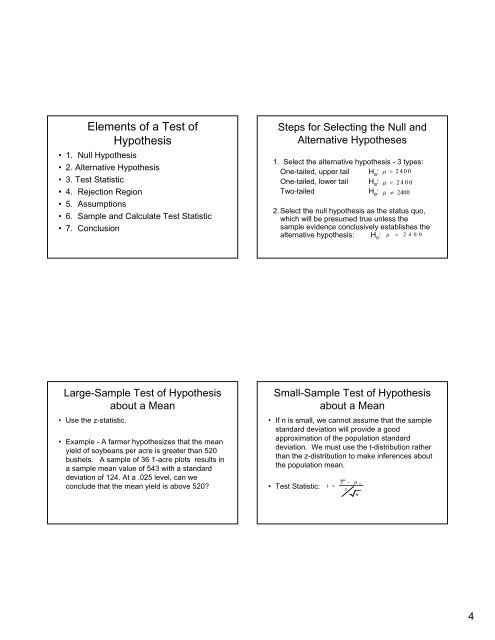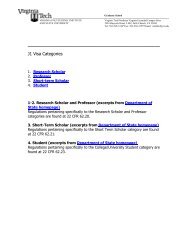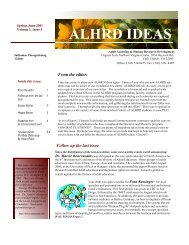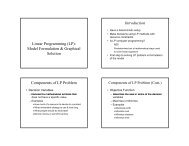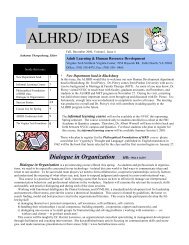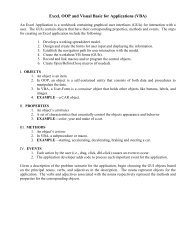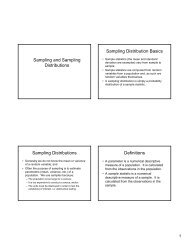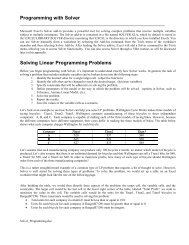Chapter 9
Chapter 9
Chapter 9
Create successful ePaper yourself
Turn your PDF publications into a flip-book with our unique Google optimized e-Paper software.
Elements of a Test of<br />
Hypothesis<br />
• 1. Null Hypothesis<br />
• 2. Alternative Hypothesis<br />
• 3. Test Statistic<br />
• 4. Rejection Region<br />
• 5. Assumptions<br />
• 6. Sample and Calculate Test Statistic<br />
• 7. Conclusion<br />
Steps for Selecting the Null and<br />
Alternative Hypotheses<br />
1. Select the alternative hypothesis - 3 types:<br />
One-tailed, upper tail H a : μ > 2400<br />
One-tailed, lower tail H a : μ < 2400<br />
Two-tailed H a : μ ≠ 2400<br />
2. Select the null hypothesis as the status quo,<br />
which will be presumed true unless the<br />
sample evidence conclusively establishes the<br />
alternative hypothesis: H o : μ = 2400<br />
Large-Sample Test of Hypothesis<br />
about a Mean<br />
• Use the z-statistic.<br />
• Example - A farmer hypothesizes that the mean<br />
yield of soybeans per acre is greater than 520<br />
bushels. A sample of 36 1-acre plots results in<br />
a sample mean value of 543 with a standard<br />
deviation of 124. At a .025 level, can we<br />
conclude that the mean yield is above 520?<br />
Small-Sample Test of Hypothesis<br />
about a Mean<br />
• If n is small, we cannot assume that the sample<br />
standard deviation will provide a good<br />
approximation of the population standard<br />
deviation. We must use the t-distribution rather<br />
than the z-distribution to make inferences about<br />
the population mean.<br />
• Test Statistic:<br />
t<br />
=<br />
x − μ 0<br />
s<br />
n<br />
4


